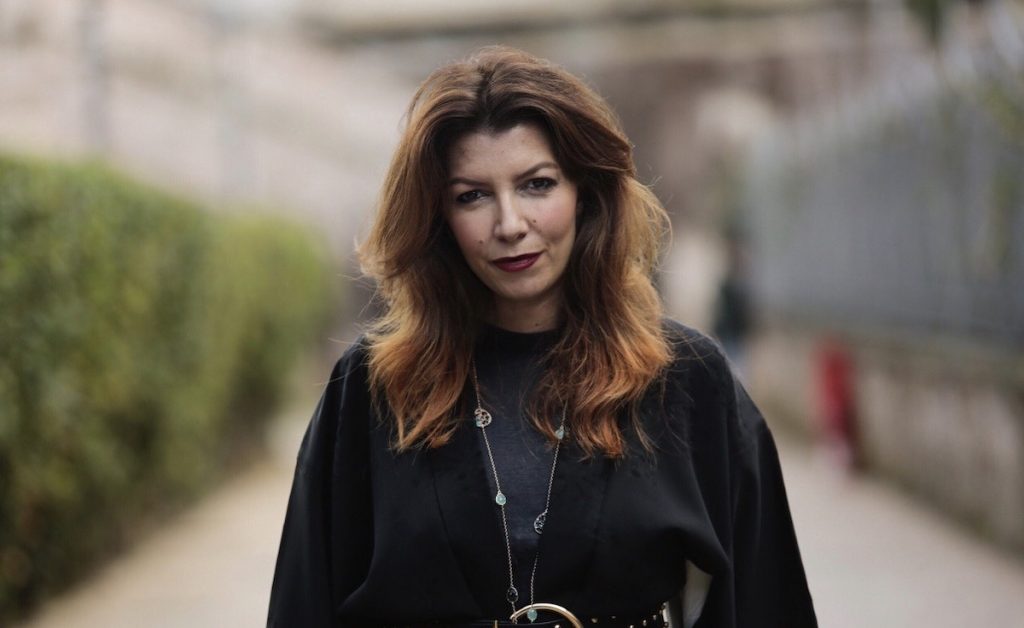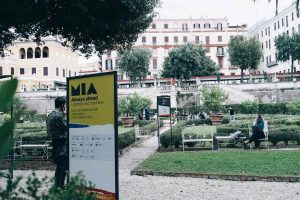
After more than 35 years of operation, TBI is closing its doors and our website will no longer be updated daily. Thank you for all of your support.
MIA director Gaia Tridente on “a new starting point” for the Italian market
As MIA (Mercato Internazionale Audiovisivo) gets underway in Rome today, TBI’s Richard Middleton talks to the market’s director Gaia Tridente about what attendees can expect from the event and how it is evolving to support the content producers of tomorrow.
Let’s focus on scripted first. Italian series are going from strength to strength – what can attendees working in drama expect from MIA this year? And tell us about some of the highlights on the unscripted side.
Unscripted and scripted are not part of the main editorial focus in this year’s MIA. The past edition was mainly divided into two big areas of content. This year we are working specifically on drama series, feature films, documentaries and animation.
Both scripted and unscripted become bigger in this way as, for example, we have included a new section on animation, which is a big sister of scripted. For unscripted, we are bringing factual entertainment into the program with panels and a showcase of a talent show. Rescheduling MIA’s agenda in this way, we are trying to give value to any kind of format and genre. This was my real starting point, to understand the needs of the industry professionals and producers working on a show or a feature film and the needs of platforms and networks who need to have the best series. In terms of scripted and unscripted we are working on all the fields of this ecosystem to deliver the best for our audience.
The co-production market and pitching forums have become a key part of MIA – how important are initiatives like this in the current production climate?
This year, our attention went into including more global countries, for example more African countries specifically in the animation section. We also have a significant presence of international platforms which is also a reflection of their interest in the Italian industry as a whole. The Italian industry is more global compared to some years ago. One of the best examples is My Brilliant Friend released by HBO, a real local show distributed internationally. The big new Apple show about Enzo Ferrari produced by Steven Knight is also a good example of what Italian industry can do. MIA is an opportunity to celebrate Italian industry.
In terms of co-production, we have the ambition to be a big hub for producers to discover new content and new IP. This year, we started a partnership with Comic Con, for example, with the idea to open up to new IP coming from comics to create an opportunity for producers. We created a pitching forum for comic authors with rights still available to understand how MIA can support this segment.
A major part of MIA is focused on co-production but we also have specific activities for buyers. In this edition we have opened the MIA Buyers Club. A brand new initiative that includes company line up presentations, market screenings, showcases only open to buyers.
You also have several content showcases planned, with categories including ‘What’s Next Italy’, ‘Greenlit’ and ‘Italian Animation Showcase’. How does this program support Italian and international producers?
We have a full line up of Italian content showcases and MIA is actually the most important showcase for Italian shows and films. We will show titles that are now in development, in production or post production. Some of them are also available for national rights and there is space for acquisitions.
In terms of animation, we have to start from the beginning: MIA is a joint venture between the two main producer associations in Italy, ANICA and APA and both of them have significant members associated which are big players in the industry of animation in Italy. The idea of creating this new section is also to give voice to the animation industry in Italy and have them more involved in this market. We had tried to include animation in the past but when I started this role, reflecting on how to support better the sector and create opportunities for the format I thought the best way forward would be to have the same activities planned for the other divisions also for animation.
The animation industry has been central in the past years, especially during the pandemic when animation continued to be produced even during lockdown. And during the war in Ukraine for example, the only segment in audio visual industry still active is animation with studios still producing. To support this industry as a whole, we developed a co-production market at MIA specifically for animation.
This is also the first MIA since you took on your expanded remit, what are you personally most looking forward to this year?
There is a lot to look forward to. For me the main pillars of MIA are the editorial content that we are able to bring. We have worked on specific programs which are opening this year such as the animation division of MIA. The main part of this effort has been to concentrate on co-production which has been open to projects from all over the world.
The program is built around pillars of content which are: drama series, feature films, documentary as well as animation. We have worked to build a daily schedule of activities for each. We have an amazing line up of conferences which are one of the most important part of MIA as there is a real curation work in selecting topics and speakers. We have an amazing new location in Palazzo Barberini and Cinema Barberini which has been fully restored and is opening with MIA. It is a unique venue for a market event which no one else in the world has.
We are supporting Ukrainian production with panels and initiatives including support to Kyiv Media Week. With delegations coming from everywhere in the world including France, Germany, the USA, UK and also Latin America, this could be a new starting point for MIA. Our audience is very demanding and we need to offer the best.
MIA looks like it is going to be bigger than ever this year. What do you feel is the biggest challenge for MIA this year and the key objective?
My personal challenge is to imagine how the future will be for producers, in terms of creativity and storytelling for the future. I am thinking about virtual worlds, horizons and metaverses. What is happening there? I think this is really key. This year we are launching a program for innovation for the creative industry. We will host one keynote with Femke Wolting, co-founder of Amsterdam and LA-based studio Submarine. They usually attend MIA with series and animation shows. They are mirroring what is the future of IP, which could represent a big opportunity for content producers and creators in the future. It will be a good opportunity to reflect on what the future can be.
This year, we are proud to have built a real virtual production set open to everyone at Palazzo Barberini during MIA. I hope MIA can open space for Augmented Reality, XR and VR in the future.





